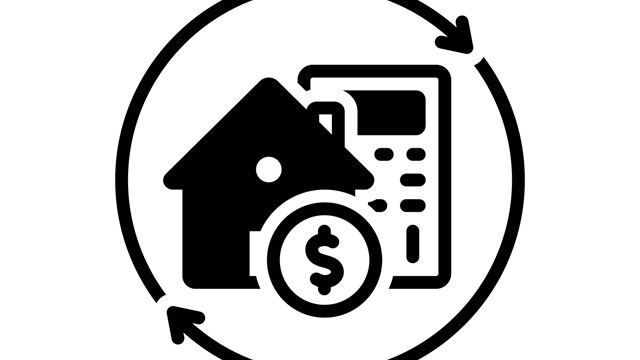Sooner or later, every resident in a condo or HOA community will have to deal with the inconvenience of living through a major capital improvement project—a roof replacement, an elevator rehab, serious exterior work, or something of that nature. No matter how carefully the project is scheduled, inevitably it will be disturbing someone. But with strategic planning and constant communication among board members and trustees, residents, management and the project crew, the hassle of the project can be significantly reduced.
Those Pesky Projects
All capital improvement projects have their major inconveniences but industry professionals note that some are definitely more disruptive than others.
“In terms of the projects themselves, any time you have to go inside of a residence, that increases the coordination of a project significantly,” says Jules Lefcowitz, principal of Community Planners LLC, a project planning company in Branford, Connecticut. The association is usually responsible for maintaining or replacing common utilities and waterlines, which can be a big project and require a lot of alignment between many parties, he adds.
Making improvements to the building’s exterior can also be a challenge. “The most disruptive types of construction projects that I have found are building envelope projects, in particular where you have to remove and replace windows as part of the project because you need access to the interior of the unit owner's home. Then there is generally touch-up in some areas that needs to be done on the inside of the unit,” explains David Barrett, PCAM, director of operations at Crowninshield Management Corp. in Peabody, Massachusetts. “This all involves coordination with entering units and scheduling to have people to be available, and that can be the most disruptive.”
Repaving parking lots has also proven to require tip-top organizational skills from management. Michael Phillips, chief operating officer of The Copley Group, a management firm in Boston, was recently involved in a parking project for one of his properties that required residents to park in an alternative parking lot for a week. “The project lasted about a month but we were able to have the contractor do what they needed to do with the spaces and have people back in while the project was still underway,” he says.
Although some projects can be done without interfering with the lives of the residents, the noise, dust, disruption and general hassle of some projects can sometimes be unavoidable. “Any project has the ability to become an inconvenience for someone,” says Phillips.
Short and Long Term Preparation
The impact of a capital improvement project can be reduced if building administrators prepare both themselves and their residents adequately for an upcoming project. When the board or management is initially planning to undertake the project many months in advance, it is critical to keep everyone informed about the potential schedule, costs and purpose. “I think the very first thing that boards need to do is demonstrate the necessity of the project. So in our work, we'll do a meeting where we show PowerPoints that set forth the physical condition of the community and why the project is necessary. But you don’t talk about finances just yet at the first meeting. Then, you have a second meeting where you do the same presentation. You talk about physical condition, and at the end you talk about finances. Now in both meetings, you’re doing a Q&A so people can ask questions. At the second meeting, you should not only have a discussion about the money from the project, but how that fits into a long range capital plan,” says Lefcowitz.
For major capital improvement projects, communication is key. “From a logistical standpoint, you need to have as much communication as possible,” says Barrett.
He explains that for many of the larger projects that he has been involved in, his company has established communication committees to help in communicating with residents on the progress of the project and what they can expect.
Notices, updates and scheduling regarding the project can be dispersed in many different forms. “Written communication is very important and usually does the job. The question is, how do you deliver it? Some properties have email group lists set up for the entire community. If it is really important, we try to hand deliver the notices either by sliding them under the door or putting them in the residents’ mailboxes. We try to do a combination of both,” says Phillips.
Barrett also suggests having frequent open meetings with owners so they can come, express their concerns and ask any questions. “Generally, we bring in all the experts to those meetings so that residents can physically sit and meet with the engineer, architect or contractor that is doing the work. Oftentimes we bring in the accountant as well to talk about the funding,” says Barrett.
Time of Year/Scheduling
While there is no job that can be perfectly scheduled, certain actions can be taken to help minimize the impact on residents.
“I usually like to schedule the work in manageable quantities for a couple of reasons: The impact on transportation through the property, the impact on disruption for the residents and the manageability of the project itself. If you have too much construction going on at one time, it cannot be properly supervised and you don’t want to lose quality control of the project,” Barrett says.
When he was involved in multimillion dollar building envelope projects, Barrett says that his company would schedule to work on only two to four buildings at a time. “If we had an 18-building project, we wouldn't start on all the buildings at the same time because they couldn’t be properly supervised; you would have dumpsters in parking spots, you have to block off certain spots for safety,” he says.
Most professionals agree that work should not extend into the evening hours for the safety of the workers and the convenience of residents, but there may be exceptions. “One example I can think of is elevator work. If an elevator is down sometimes you can pay extra and have the workers cover longer shifts to repair them. You can’t really have elevators down for a long period of time,” says Barrett.
Phillips agrees that most projects are best completed during the day, “but the most important thing is to establish a schedule and make sure that the contractor stays on schedule. If you establish a working schedule of nine to five, some contractors might show up at seven in the morning and try to get started. The management company needs to step in at that point and make sure that doesn't happen,” he says.
A lot of times the project dictates when you will be able to do the work. Obviously, it would be very difficult to revamp the facade or redo the parking lot in the winter, but it might be equally as challenging in a summer heat wave. “In most communities that we manage, one season versus another in terms of convenience for the unit owners doesn’t make a difference. I think that for them, the most important thing is to keep the project as short as you can, have a schedule, communicate, and stick to what you decide. The worst thing in the world is to tell unit owners a project will last two weeks but then it lasts six. Then you are really inconveniencing people and losing credibility,” says Phillips.
Chain of Command
But even under the best of circumstances, preparing residents, including rental tenants, as much as possible doesn’t mean that the project will go off without a hitch and without complaints.
Remember the famous line in the movie, Apollo 13: “Houston, we have a problem.” No matter the project, there’s always a chance something can go awry. Water lines can break, roofs can leak, the project can take twice as long when something is uncovered and you may find that your formerly calm residents are now suddenly irritated. To make sure that this doesn’t happen, it’s important to make sure all your T’s are crossed and your I’s are dotted before the project even begins.
Phillips stresses that it is important to establish a chain of command early on and determine who will be responsible for what part of the project.
“The property manager generally takes the lead in communications and you generally have several people involved in the process. If it is a really big project, sometimes the association will hire a clerk of the works, who will coordinate between the contractors, the architect or engineer and the management company. If you don't have a clerk of the works, the manager will fill in that role and is the centerpiece for the communication with the owners, the board and the vendors,” says Barrett.
Bigger projects might also have weekly construction meetings on site, giving the manager and board members the opportunity to be updated on the schedule, talk about problems and then communicate this information to the rest of the board and owners, he adds.
There May Be Problems
Unfortunately, no matter how meticulous the organization and how prepped the residents and team are for the project, problems may arise.
“It’s pretty typical that issues come up during construction. You have to be able to have the flexibility to adapt your plan and make sure that that is adequately communicated to the residents. A lot of people who have experience with construction projects know that there will be contingencies early on and they account for that. A lot of experienced architects and engineers try to prepare you for that,” says Barrett.
Often there will be unforeseen circumstances. You will pull off siding to discover mold or a pipe might burst in the middle of a waterline project. “When we find a structural issue that we did not anticipate being there, if you have proper contingencies you are okay. A lot of the times we will call the engineer for a special visit to review and modify the scope and give instructions on how to deal with it,” says Barrett.
Ask for Help
Good communication with your residents is key, but some problems can leave even more experienced property managers baffled. Turn to higher-ups in the company first. They may have experienced the same problem or may have another property manager who has gone through something similar and can offer first-hand advice or experience.
If the project causes any legal glitches, get advice from an attorney. He or she can also make sure to address any legal considerations before, after and during the project. “Consult your attorney about the contracts. You want to make sure the contracts are properly written, with proper protections for the association,” says Barrett.
If the manager is a member of any trade organization, such as the Institute of Real Estate Management (IREM) or Community Associations Institute (CAI), these organizations have resources, including back issues of their published articles, which are available to members on their websites. There might be a particular problem with capital improvement projects that someone has either experienced or can help your association with. These organizations also offer online services to make your job easier.
Lisa Iannucci is a freelance writer and a frequent contributor to New England Condominium. Editorial Assistant Maggie Puniewska contributed to this article.







Leave a Comment